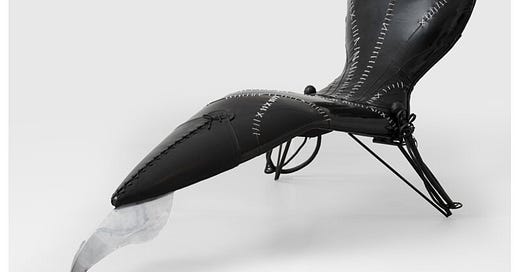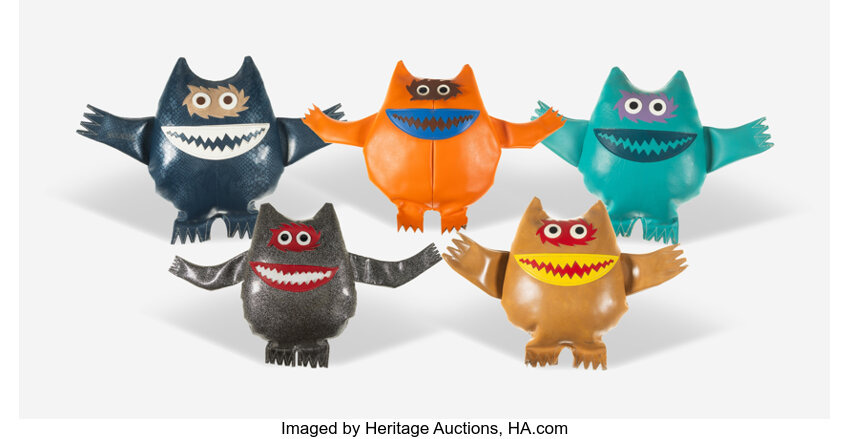In 1976, Jenette Kahn became publisher of DC Comics. DC Comics was owned by Warner Brothers, and prior to to her ascension to publisher, she had persuaded the head of Warner Publishing not to shut down the print publication of comic books. DC could have become a licensing firm, existing only to make sure that Warner Brothers got paid anytime someone made a Superman movie of a Wonder Woman TV show. Consequently, Kahn was in charge of DC when the Christopher Reeves Superman movie came out and when the big Batman franchise begun—1992’s Batman Returns figures into the auction in a very visible way. As for the comic books, Kahn successfully revived the fortunes of DC after the company contracted rapidly in 1978—an event known to comics obsessives as the DC Implosion. DC had been struggling as a comic book publishing business for about a decade—they were surpassed in sales by Marvel Comics in the early 70s. Kahn changed the name of the company from National Comics to DC Comics and hired famed designer, Milton Glaser, to design the new logo.
The fact that she would hire such a well-known designer reflects how plugged into elite culture Kahn was. When I think of the publishers of comic book companies, I think of cigar-chomping exploiters like Martin Goodman, Stan Lee, or Jack Leibowitz, or gangsters like Harry Donenfeld—but Warner Brothers was a publically traded corporation and preferred to hire accomplished Ivy League grads to run their divisions. Kahn studied art history at Radcliffe and subsequently worked in New York’s magazine publishing world, specializing in children’s publications. She founded a magazine called Dynamite that I remember fondly from Scholastic book fairs I attended as a child. And what was DC Comics but a children’s magazine publisher? She brought a kind of elite, bourgeois sensibility to what had hitherto been a somewhat working class corner of the publishing world.
And in a way, DC’s publishing program gradually came to reflect the publisher herself. She was there when DC hired Alan Moore, who brought a new level sophistication to the superhero genre (that it really didn’t deserve). Moore’s clever supernatural stories eventually morphed into a whole division at DC called Vertigo. Vertigo was the brainchild of Karen Berger who had been hired in 1979. Berger’s university background was in art history and literature, and over the course of Kahn’s tenure, more and more well-educated artsy women were hired by DC. Kahn left DC in 2002 and started a film production company, Double Nickel, where she still works. She served on the board of Exit Arts, and a lot of items here come from Exit Art fundraisers. In 2002, she published a book called In Your Space: Personalizing Your Home and Office, which showed off her love of artistic furniture. The collection she is selling here includes furnishings from the Memphis Group, Philppe Starck, Frank Gehry, and others.
The Catwoman Chaise by Alex Locadia was produced in 1992. I remember reading about it in the comics press at the time, and assuming that it was something that Warner Bros commissioned. Since Kahn is selling it, I assume she commissioned it. It certainly fits the character of Catwoman, but does not look relaxing.
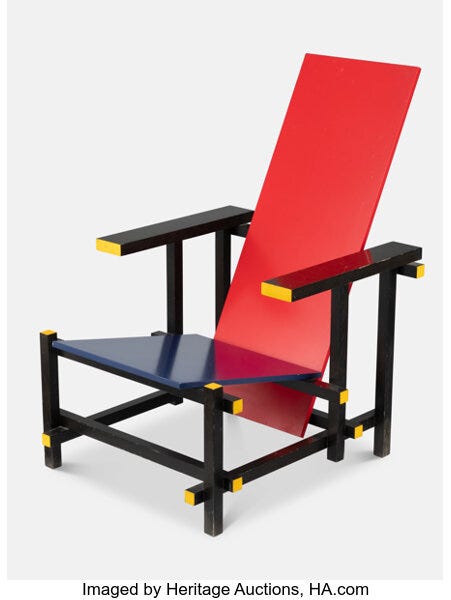
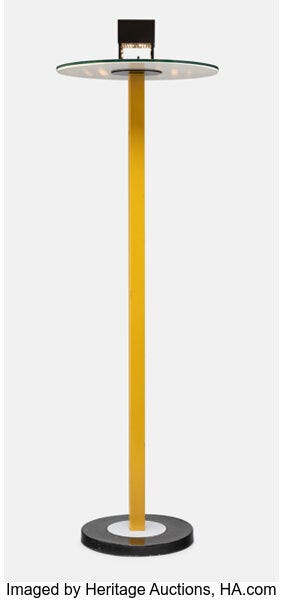


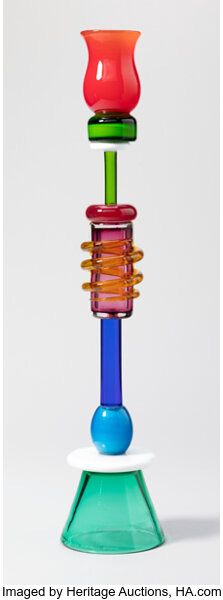
All these pieces of furniture look striking, cool, or even classic in the case of Gerrit Rietveld Red and Blue Chair chair, but they all look a little uncomfortable. That’s the trade off, I suppose. To have furniture stylish enough to produce a coffee table art book about, you have to be willing to sacrifice some comfort. The two chairs on the lower right are “Jenette Chairs,” designed for Kahn and her partner Al Williams by a pair of brothers named Fernando Campana and Humberto Campana. The broom bristle backs appear brutally uncomfortable.
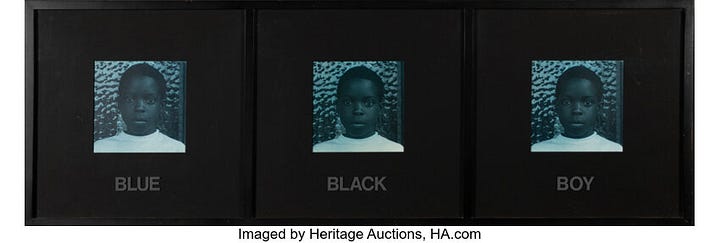
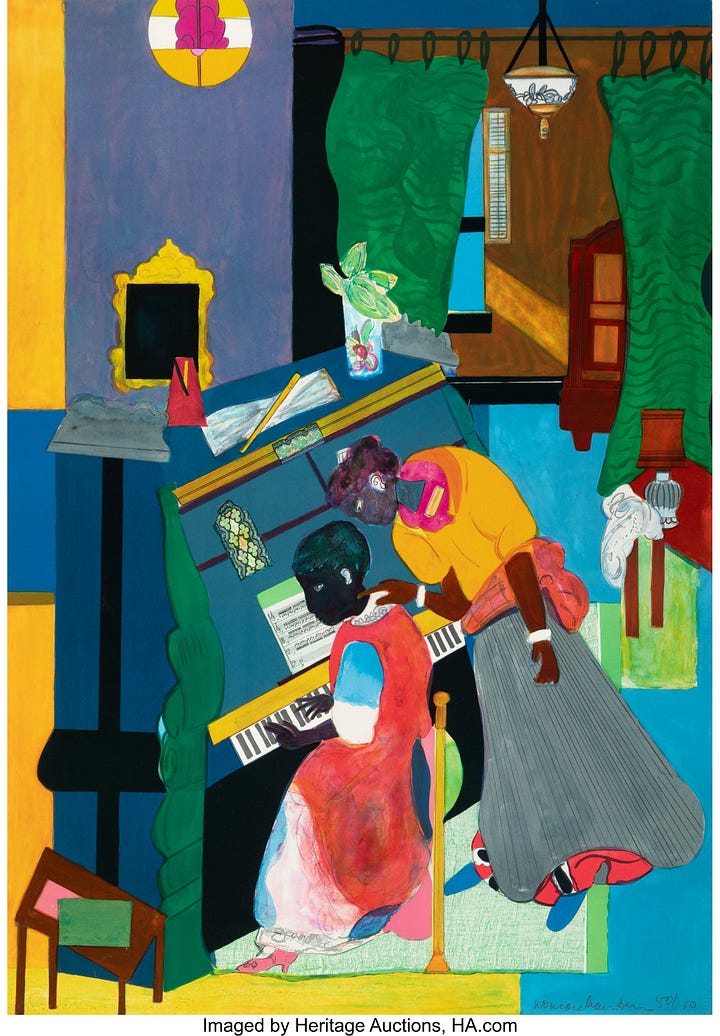
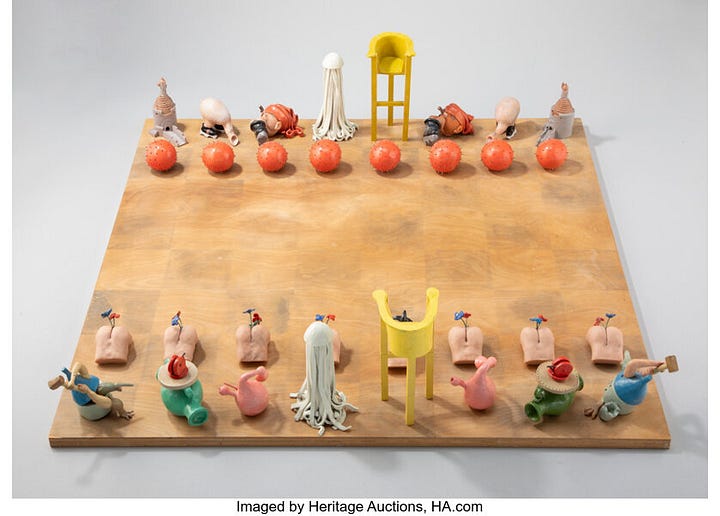
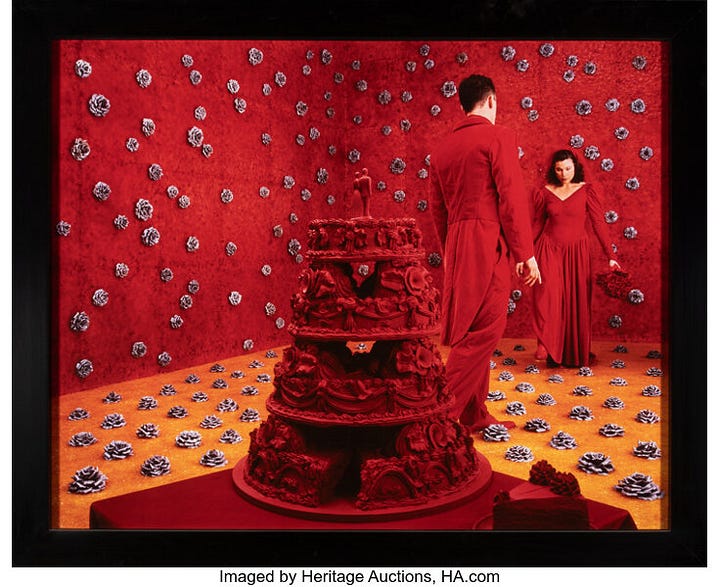
As you would imagine from an Exit Art board member, Kahn is selling off a bunch of fine art in addition to her very fancy furniture. The four I’m showing above are but a small part of the artworks on offer. Kahn is selling several Carrie Mae Weems works in addition to the one above. It took me a second to make sense out of the Roxy Paine chess set, with the pawns being represented by torsos with flowers sprouting out of their assholes. The pieces are all quotations from the strange paintings of Hieronymus Bosch.
The most surprising artwork in Kahn’s collection was Glows in the Dark by Al Souza. Souza taught for a long time at the University of Houston—long enough that I consider him a Houston artist, even though he moved back to his home state of Massachusetts after his retirement.


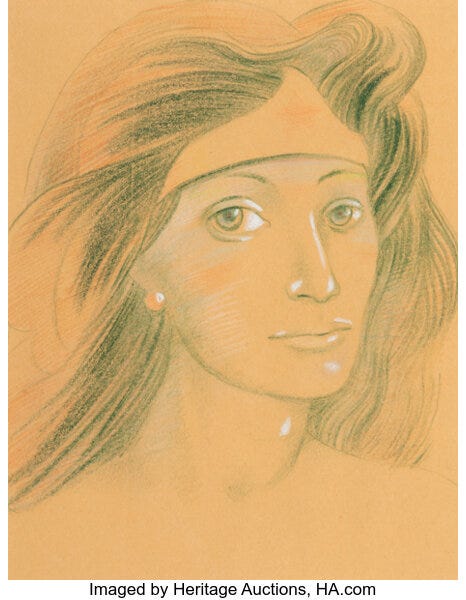
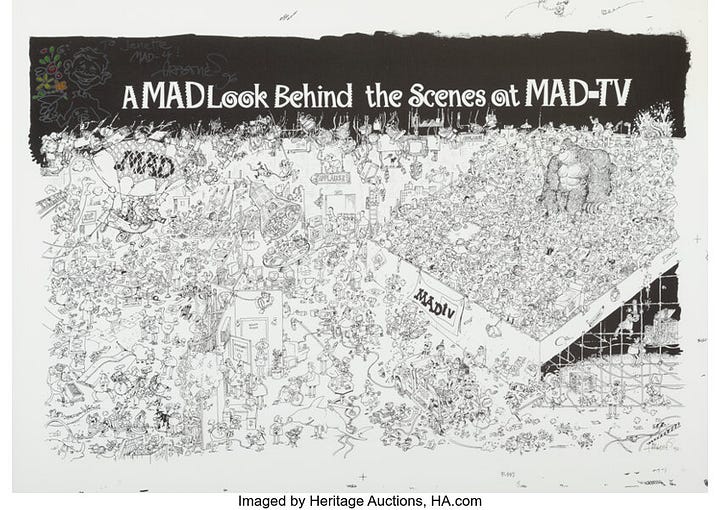
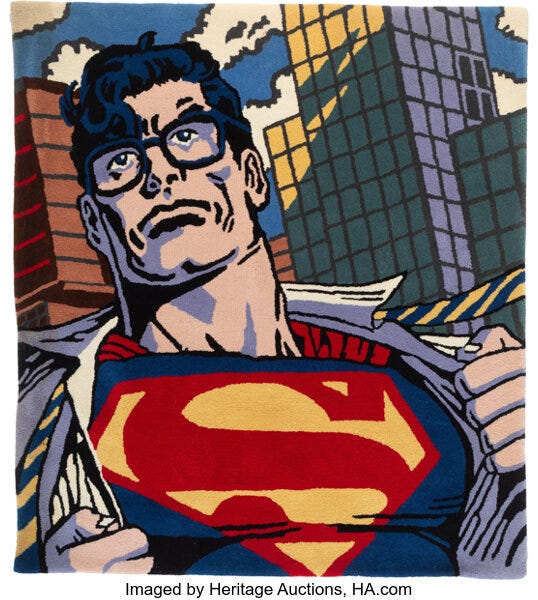
It would be surprising if Kahn’s sale had not included any leftover items from her tenure at DC. The one time I visited the offices of DC, I was stunned to see an Andy Warhol Superman hanging in the cluttered, busy office. (Given that a Warhol Superman sold at Christie’s for $277,000, I wouldn’t leave it out among a bunch of underpaid comic book editors. . .) However, that was not among the pieces on offer. I put in a bid for the Sergio Aragones piece on the lower left, but was quickly outbid.
But like all people involved with comics, Kahn liked collecting stuff, and she is selling her collection of Naugas. What were naugas? Back in the late 1930s, the Uniroyal Corpration invented an artficial form of leather that they marketed as “naugahyde”. In the 60s, they promoted Naugahyde by producing little dolls made of the stuff. They called their wacky multicolored monsters “naugas” and naugahyde was intended to be the leather produced from these creatures. (As a promotional item, it is better not to think too hard about them.) Kahn is auctioning off 30 of these critters.
The auction will take place on May 15, so if you want to own some of Jenette Kahn’s stuff, you have a few days to get your bids in.
[Please consider supporting this publication by becoming a patron, and you can also support it by patronizing our online store. And one more way to support this work is to buy books through The Great God Pan is Dead’s bookstore. ]

